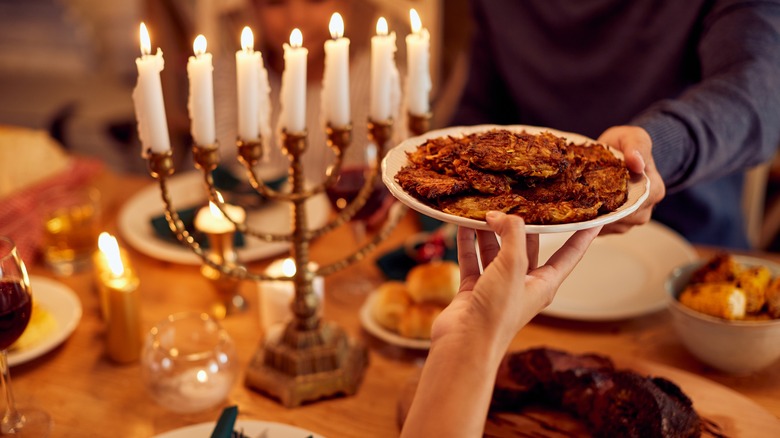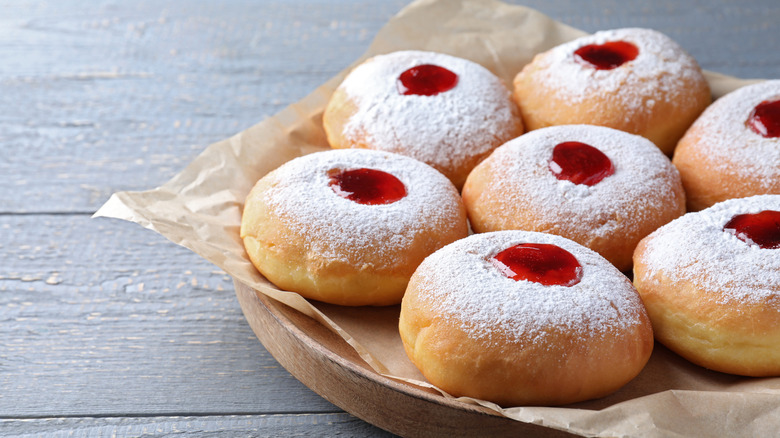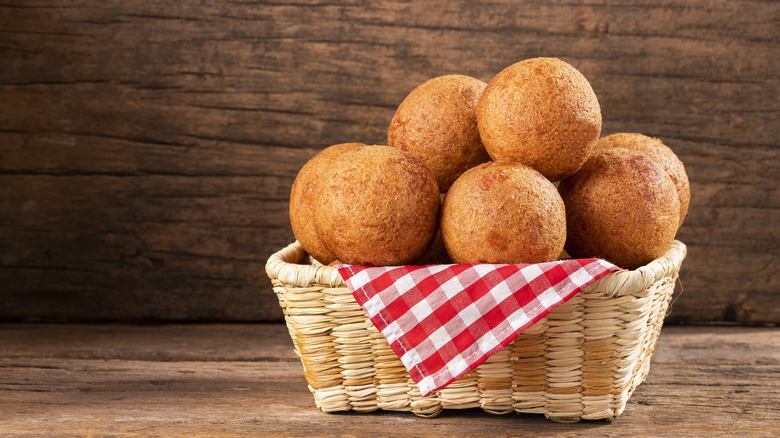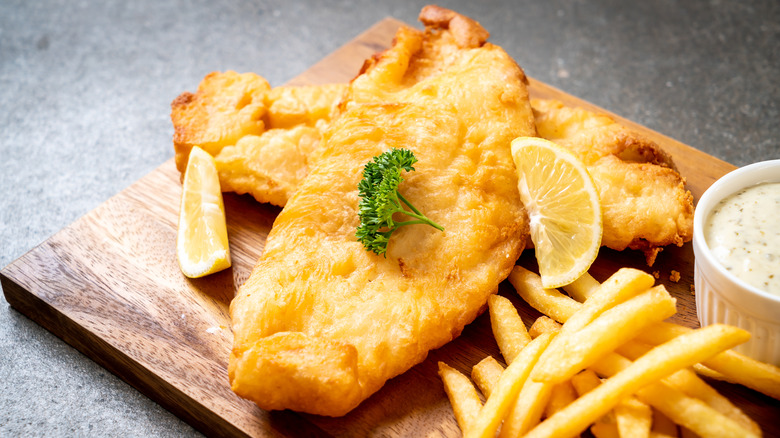The Symbolic Reason Hanukkah Dishes Are Fried
The holidays are a special time for people of many faiths. Celebrations abound, and many gatherings and festivals mean loads of food. For those who celebrate Christmas, incredible gingerbread houses, glazed ham, and roast goose are often on the menu (via YouTube). For those who observe Diwali, BBC Good Food notes that kebabs, sweetmeats, and fried foods like the crispy, savory South Indian snack Murukku are in order. Then there's Hanukkah, another holiday rife with fried foods. Though, in the case of Hanukkah, fried foods hold a special meaning.
The tale of Hanukkah, according to the History Channel, is one of revolution. In the second century B.C., the Jewish people staged the Maccabean Revolt, which was a struggle against Greek-Syrians who were oppressing the chosen people. But Hanukkah isn't a love of conflict. The word "Hanukkah," Britannica clarifies, means "dedication" in Hebrew. It is a chance for those of the faith to confirm their commitment to the principles of Judaism.
During the revolution that the History Channel describes, there was a Hebrew temple, the Second Temple, which was reclaimed by the Jewish people of that time. The people were told to rebuild the temple and light its menorah, which is a traditional candelabrum of the faith. However, as JewishHistory.org explains, there was only enough sacred, untainted olive oil to keep the candles of the menorah burning for a single day. Miraculously, it burned for eight, so the legend goes.
Hanukkah foods are cooked in oil to honor the miracle of the menorah's light
When those of the Jewish faith retook their Second Temple and had the oil for the candles burn for eight days, it was considered a miracle, according to The Rational Believer. Whether or not the story is true remains a mystery. However, the ties of oil to Hanukkah are very much a practice that continues to this day. Supposedly, claims Hebrewversity, it is this celebration of oil that brings about the many fried foods, and foods baked with oil, that observers of the holiday use to acknowledge Hanukkah in their cooking.
If you've ever tried some traditional Hanukkah foods, you know that the cuisine can be pretty incredible. Beyond potato latkes, My Jewish Learning highlights numerous Jewish fried foods from around the world, all of which are nearly guaranteed to make anyone's mouth water. In Italy, there's actually fried chicken called pollo fritto di Hanucca. Cheese Croquettes are eaten in Mexico, and then there's Sambussak B'Tawa, which are chickpea turnovers made in Iraq.
One of the best-known and best-loved Hanukkah foods is sufganiyot, which are jelly donuts. These may have begun as pancakes or fritters coated in syrup known as "sofganim," reports Jewish Action. Whatever they are, and whatever name they're known by, they're a sugary delight. For those seeking more fabulous fried fare, there's a whole list of Hanukkah foods to try. Many are so tasty they might have you talking for eight days.
Jews love fried food way more than they're often credited for
The hidden secret of Jewish cuisine is that there's far, far more fried food than people realize. Latkes and sufganiyot are the most popular and well-known among non-Jews, of course (after all, who among the gentiles doesn't love a potato pancake or a jelly doughnut?), but they're far from the only ones. It was likely Ashkenazi Jews in the American Northeast or Midwest who invented fried green tomatoes, after all.
But it's Sephardic Jews, in particular, who deserve a special mention here. The Jewish diaspora that began in Spain and Portugal before being expelled during the Spanish Inquisition (resulting in the group winding up in places like North Africa, Italy, and Greece), Sephardic Jews have a particularly noteworthy history when it comes to Jewish food — particularly fried ones. Sephardic Jews have a particular habit of adopting fried foods for holiday use from the regions in which they settled, like buñuelos (fried dough fritters potentially filled with something) for Hanukkah. These communities then put their own unique spin on the dish by adding things like orange honey glazes.
Jews created one of the most famous fried dishes in the world
But that's far from the only way in which Sephardic Jews have influenced international fried foods. The most notable: Sephardic Jews are responsible for fish and chips, sometimes referred to as the national dish of England. During the reign of Oliver Cromwell (1653-1658), the Lord Protector lifted the longstanding ban on Jewish immigration to England and specifically invited a large enclave of Sephardic Jews living in Amsterdam to move to London. They brought with them their habit of frying fish. The first references to what we know of as fish and chips specifically refer to them as "fish fried in the Jewish fashion." So it isn't just Hanukkah; Jews have an especially long history with fried foods.
Nevertheless, thanks to the prevalence of latkes, sufganiyot, buñuelos, and other dishes like Moroccan sfenj, it's during Hanukkah when the Jewish love of all things fried really comes to the fore. After all, if the temple's oil was good enough to last for eight days, it was good enough to cook some of the world's most delectable dishes.



